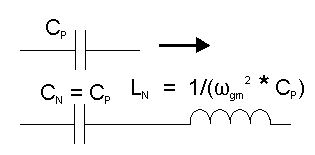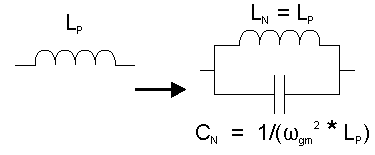A translation from a low pass prototype to a band stop filter requires three steps. The first of which is to do a resistance translation (q.v.) and second to do a high pass frequency translation using this conversion factor.

Be warned that the corner frequencies mentioned are not down at the bottom of the band stop curve. The corner frequencies are at the 3 dB down points on the curve. Go to Help-Data Entry-Band Stop in the main menu.
Having done those two translations, find the geometric mean of the two frequencies f uc and f lc by using

The geometric mean and the arithmetic mean are only a few percentage points different when pass bandwidths are small, but can become large when bandwidths increase.







